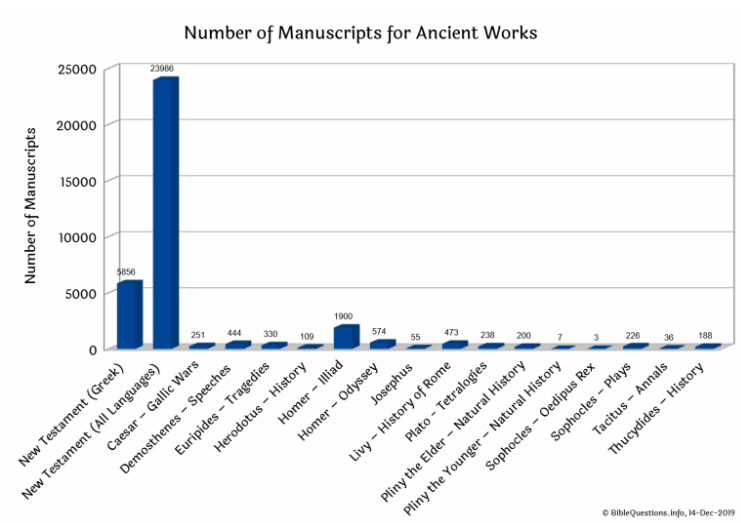Can You Trust The New Testament? (Part 1)
Can we really trust the Bible as history? Was it preserved accurately, and does it reflect real events? That is what we will look at in this blog. I will provide what I believe are 5 strong and easy things Christians can remember about the reliability of the Bible.
It is also important to note that experts look at two key things when evaluating ancient texts and whether they are reliable:
How many manuscripts/copies exist
How close are they to the original events?
1. We have more copies of the New Testament than any other book from the ancient world.
The New Testament was written in Greek, and currently, we have over 5,700 Greek manuscripts of the New Testament, as well as nearly 25,000 manuscripts or fragments of manuscripts in other languages. This is a crazy amount of material.
For comparison, no one doubts Julius Caesar’s writings on the Gallic Wars. And we have only about 10 surviving copies, copied nearly 900 years after he lived. Yet historians trust those accounts. The New Testament has thousands of accounts, written within decades of the events (See the graph below).
Number of Manuscripts for Ancient Works. **Source Biblequestions.info
Why does this matter?
It matters because the more manuscripts you have, the more likely it is that you can figure out what the authors originally said.
The sheer number of manuscripts allows scholars to reconstruct the New Testament with a high degree of accuracy, of over 99% of what the originals said. Even if we didn’t have all this evidence, we could still reconstruct almost the entire New Testament from quotations of the earlier church fathers of the second and third centuries(100–299 AD).
2. Most of the New Testament was written before 70 AD, not centuries later.
And the whole New Testament was written before 100 AD. Jesus’ death was between 30 and 33 AD. Popular dates for when the gospels were written are between 50s and 90s AD, which means they were written 20-30 years after Jesus' death. The gospels were produced well within the lifetime of eyewitnesses to Jesus' ministry.
This matters because documents written closer to historical events are more trustworthy for experts and historians, as they better reflect what the authors truly wrote.
Let's do a quick comparison of a notable figure, Alexander the Great, who died in 326 BC. The earliest biography we have for him is about 200 years after his death. Yet the account of him is widely accepted as accurate. The gospels are significantly earlier. This is one example, but there are several ancient sources that provide biographical information, and the gap is much larger than that of the gospels.
Paul's letters are generally dated earlier than the gospels. Paul's conversion to Christianity is around the early 30s AD, and he died for the faith in the mid-60s AD, which would date Paul's letter between the 40s and 60s AD, which is within 10 years of Jesus' death.
The story of Jesus was recorded soon after his life, death, and ministry. While this doesn’t guarantee accuracy, it lends credibility to the New Testament as a historical source. Historians value early sources, and the New Testament is a prime example of these.
Want to go deeper?
Information in this post is adapted from I Don’t Have Enough Faith to Be an Atheist by Norman Geisler and Frank Turek, and Trustworthy: Thirteen Arguments for the Reliability of the New Testament by Benjamin Shaw.

